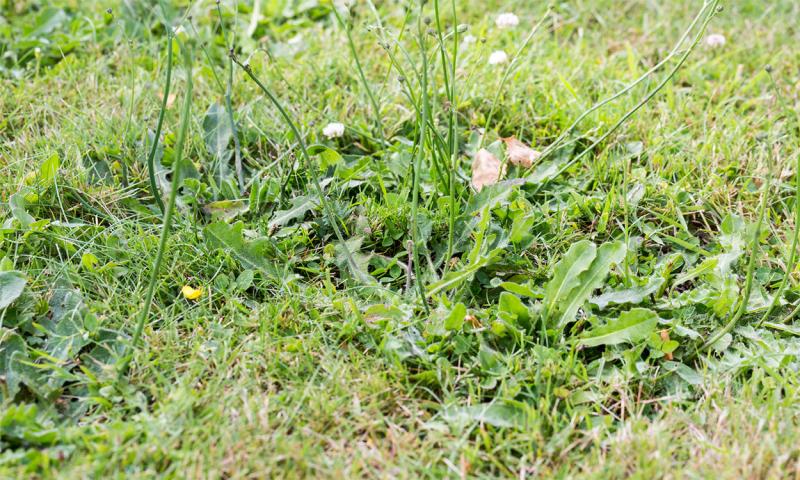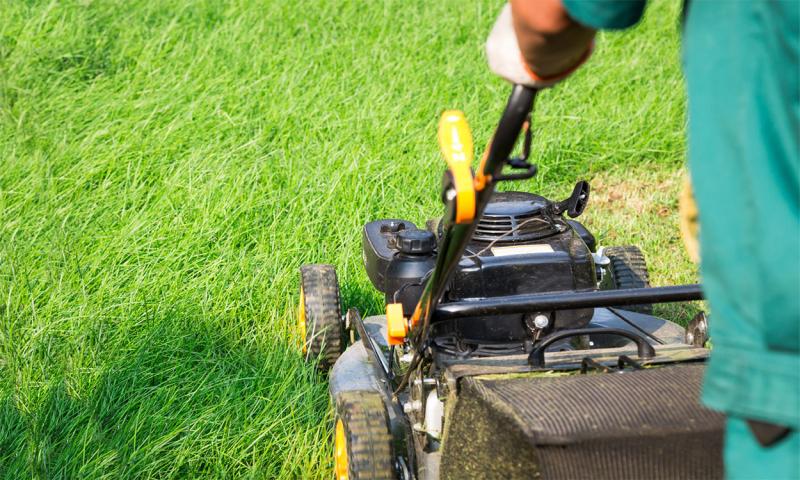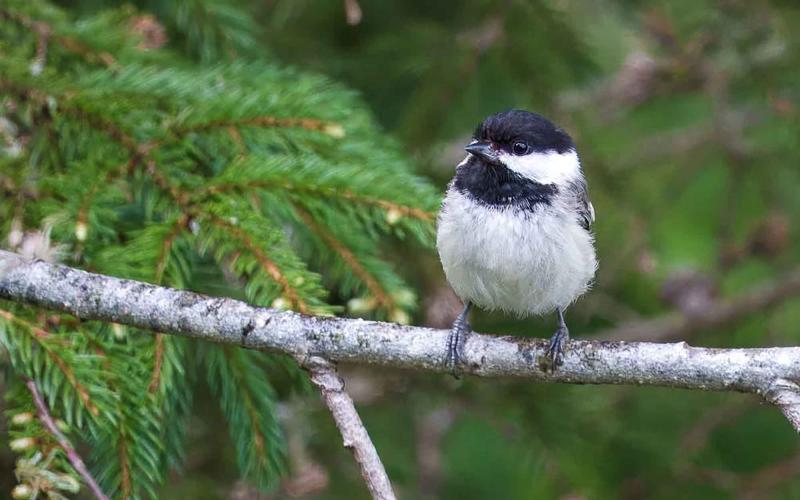
Written collaboratively by Eric Jones; Kristine Lang; and Rhoda Burrows, former Professor & SDSU Extension Horticulture Specialist.
Weeds are common in continuously disturbed areas grown for aesthetic appeal, including gardens and lawns. Lawns can suffer reduced esthetics and recreational value due to infestations of weeds. While herbicides can be applied to directly control weeds, some sites (for example, golf courses and gardens) and adjacent sites cannot tolerate injury incurred by herbicides. Thus, homeowners and managers of these sites may decide not to apply herbicides. Moreover, grass weeds can be difficult to control in lawns with herbicides due to the lack of selectivity. There are options outside of herbicides that can be very effective in controlling weeds.
Non-Herbicide Tactics
Mowing
The most common and widely utilized method of weed control in lawns is mowing. Many broadleaf weeds are effectively controlled with mowing, as the growing point is removed. However, due to the prostrate growth exhibited by grass weeds and some broadleaf weeds (for example, groundivy “creeping Charlie”), plants can survive short mowing treatments. The growing points of grass weeds are protected within the leaf sheath, and new growth can initiate after mowing. Short mowing heights can also increase the density of both grass and broadleaf weeds in lawn, due to open areas for emigrating seeds to land and more sunlight reaching the soil surface to promote germination. Increasing the mowing height can reduce the density of weed infestation.

While increasing mowing height does not directly control weeds, taller turfgrass can create a denser canopy that inhibits weed germination and growth and increases the presence of organisms that eat weed seeds. Furthermore, higher mowing height can promote a deep, robust root system of the turfgrass that reduces need for water and chemical inputs to promote a healthy, competitive lawn that can additionally improve weed control. Mowing height should be set between 2 and 4 inches to suppress weeds. Mowing can directly control larger, erect-growing grass and broadleaf weeds by excising the immature seedheads to reduce the amount of seeds returning to the soil seedbank.
Mulching
Mulching can effectively impede seeding germination to establishment. While mulching will be confined to gardens, flower beds, and around trees and shrubberies, the result is reducing the amount of weeds that can produce seeds to establish in adjacent areas. Mulch should be applied 4 to 6 inches thick to create an impermeable barrier to germinating weed seeds. Care should be taken to ensure mulch is not placed thickly over perennial plants that have yet to emerge.
Hand Weeding

Handing weeding is also effective. While a laborious task, hand weeding is usually best on very confined patches of weeds or on a lone weed. Annual weeds (for example, crabgrass) are best controlled with hand weeding compared to perennial weeds (for example, dandelion and ground ivy). If the root system is not completely removed from the perennial weed, new vegetative growth can resume. Prong-tip tools (dandelion digger) are available and effective at removing the roots of perennial and annual species. Be sure to remove the excavated weeds from the area and weeds can re-root after removal.
Building Density
Any practices that increase lawn density and vigor will decrease the colonization and persistence of weeds compared to unmaintained lawns. Such practices include aeration, fertilizer, and increased seeding/sprigging rate and watering. These practices used in combination are generally more effective for weed management compared to using only one practice.
Herbicide Tactics
Herbicides are commonly applied at preemergence and postemergence timings in lawns.
Preemergence Herbicides

Herbicides with only preemergence activity can be applied for weed control to established lawns without incurring injury. Commonly applied preemergence herbicides are sold as granular products with fertilizer mixed in and referred to as “weed and feed” mixes. These herbicide/fertilizer mixes will be more effective on annual grass weeds (for example, crabgrass) but will suppress some broadleaf weeds. It will be important to apply a preemergence herbicide early enough before the weeds emerge; usually around when lilacs begin to bloom.
Postemergence Herbicides
There are more options to control broadleaf weeds with postemergence herbicides compared to grass weeds. Products containing 2,4-D, dicamba, and MCPP (sold under numerous tradenames) are effective on broadleaf leaves. Some harder-to-control weeds, such as ground ivy (creeping Charlie), or bindweed, may need to be re-treated 10 to 15 days after the initial treatment. These herbicides can injur or kill plants in neighboring sites, such as gardens, trees, or ornamental nurseries. Extreme caution should be taken to identify sensitive species in proximity before applying these herbicides over extensive lawn areas. Quinclorac (Drive, Weed-B-Gone plus crabgrass killer, etcetera) will provide selective control on grass weeds in lawns. All weeds should be treated small in size (2 to 4 inches) to ensure effective control.
Nonselective Herbicides
Nonselective herbicides with minimal residual activity (for example, Roundup “glyphosate” products) may be applied before seeding or sodding to already emerged weeds if the site is being renovated. Controlling weeds prior to lawn establishment or planting is crucial, as plants growing without turfgrass interference will grow more vigorously, which could result in harder-to-control plants. The nonselective herbicides can be applied to emerged weeds in a lawn, but the lawn will be injured or killed. When using any herbicide, be sure to follow all labeled instructions for use.
In Summary
Despite the continuous effort put into lawns, weeds are always seemingly present every year. Reinfestations of weeds in well-maintained lawns are due to non-controlled neighboring plants producing seeds and the emigration of those seeds. A weed-free lawn will require continuous maintenance each year.


